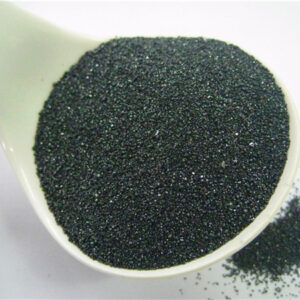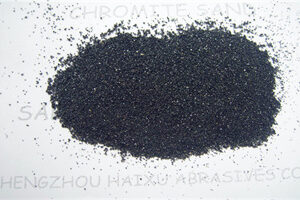Application of chromite flour in the production of magnesia-chrome bricks

I. Composition as core raw materials
Basic raw material combination
The main raw materials of magnesia-chrome bricks are magnesia sand (MgO content is usually >89%) and chromite flour, of which chromite flour provides Cr₂O₃ component, and forms magnesia-chrome spinel structure through high-temperature sintering, giving the material high refractoriness and corrosion resistance.
Component regulation and variety classification
The Cr₂O₃ content of chromite flour directly affects the performance of magnesia-chrome bricks. For example:
Ordinary magnesia-chrome bricks: using medium and low purity chromite flour (Cr₂O₃<14%), the grains are mainly bonded by silicates, the cost is low, and it is suitable for cement kilns, glass kilns and other scenes.
Directly bonded magnesia-chrome bricks: using high purity chromite flour (Cr₂O₃≥46%), through high temperature sintering to achieve direct intercrystalline bonding between magnesia sand and chromium ore, improve thermal shock resistance and slag resistance.
2. Key to optimizing material structure and performance
Improved thermodynamic properties
The high melting point (about 2150℃) and good thermal conductivity of chromite flour can enhance the high temperature stability of magnesia-chrome bricks and reduce the risk of cracks caused by thermal stress.
Corrosion and permeability resistance
The alkaline resistance of Cr₂O₃ enables it to effectively resist the penetration and erosion of high-temperature slag and molten metal when used in parts such as ladle slag lines.
Improved thermal shock resistance
Studies have shown that increasing the amount of chromium ore powder added (such as when South African chromite flour is added to 20%) can significantly improve the thermal shock resistance of directly bonded magnesia-chrome bricks, but the changes in compressive strength and bulk density need to be balanced.
3. Specific applications in production processes
Sintering process adaptation
High-purity chromite flour needs to be combined with fused magnesia sand and sintered at a high temperature of 1700-1750℃ to form a stable spinel phase. Additive synergy
Additives such as chrome green are added to some formulas to further optimize the grain bonding state and material density.
4. Typical application scenarios
Steel metallurgy
Used in key parts such as ladle slag line and arc furnace lining to resist scouring by alkaline slag and high-temperature molten metal.
Cement and glass industry
Provide long-term and stable refractory protection in high-temperature alkaline environments such as rotary kiln firing zone and glass kiln regenerator.
Non-ferrous metal smelting
Applicable to linings of smelting furnaces such as copper and nickel, especially in highly oxidizing atmospheres.
5. Process parameters and quality control
Chromite flour ratio control
Experiments show that the addition of South African chromite flour in direct-bonded magnesia-chrome bricks is preferably 20%, at which time the comprehensive performance (thermal shock resistance, apparent porosity) reaches the best.
Particle size and purity requirements
Chromite flour needs to be finely ground (usually 325mesh-2500mesh) and the Cr₂O₃ content must be ≥46% to ensure high temperature reaction activity and structural density.
Through the above applications, chromite flour is not only an essential raw material for magnesia-chrome bricks, but also a key factor in improving the comprehensive performance of refractory materials through composition regulation and process optimization.




















